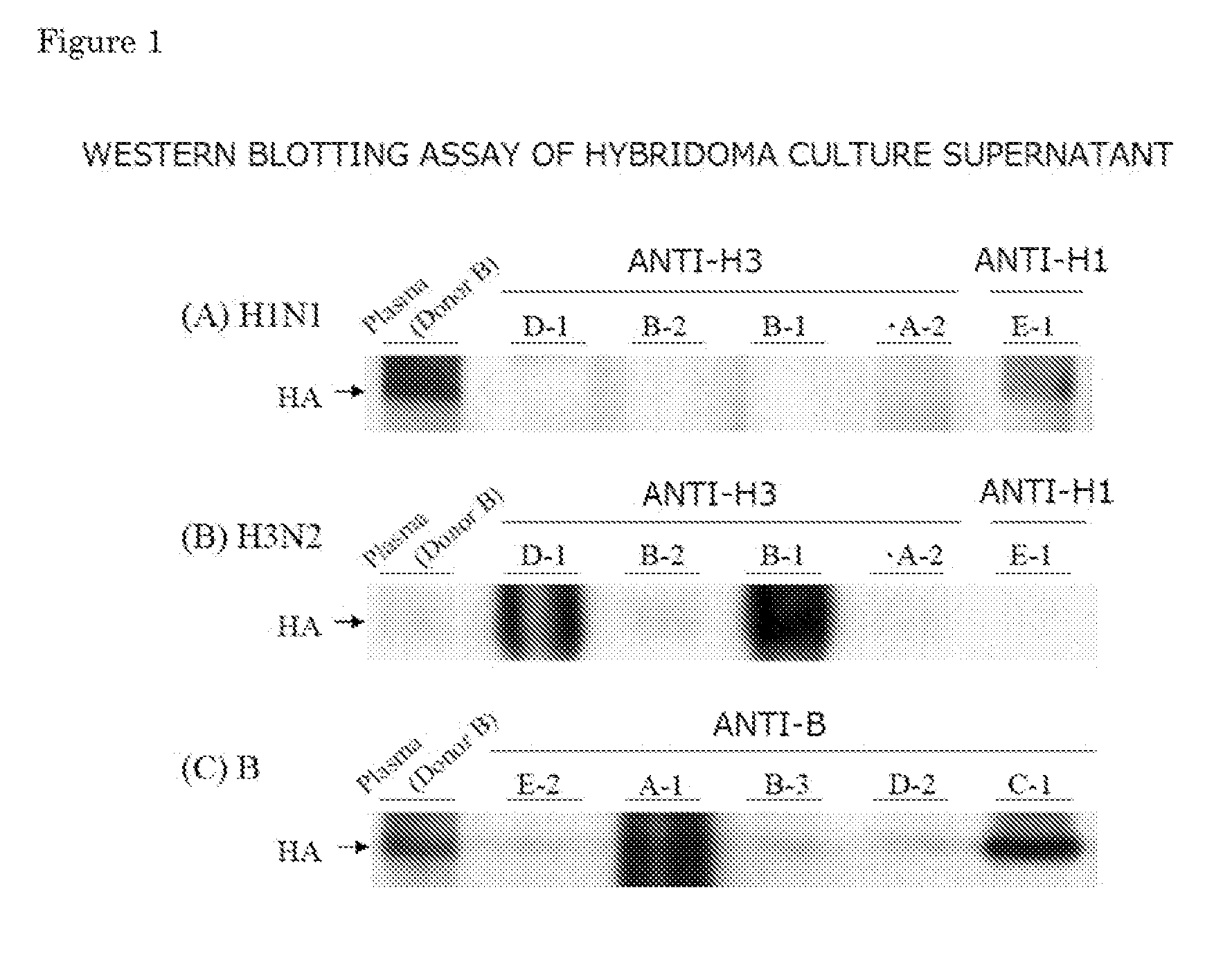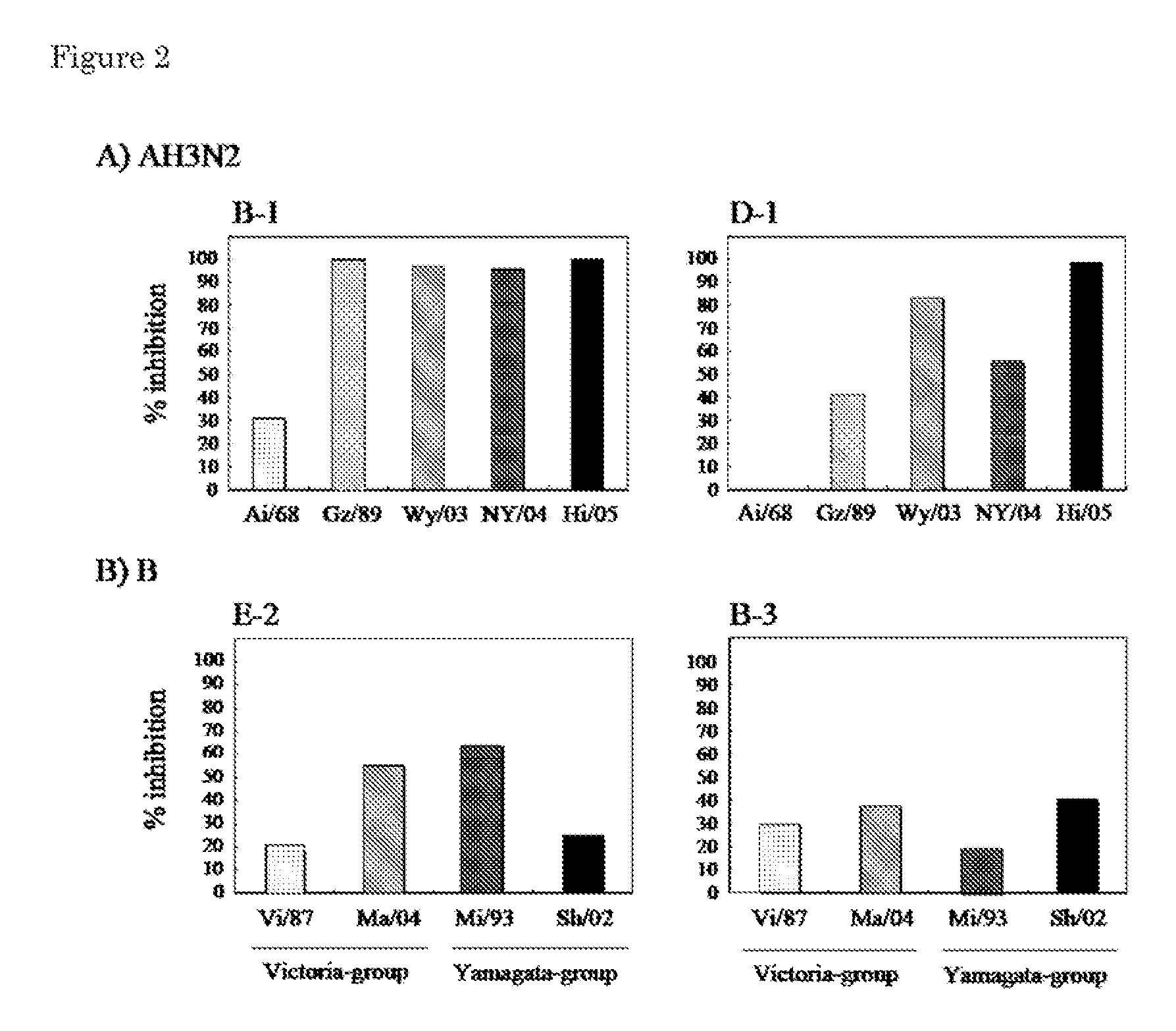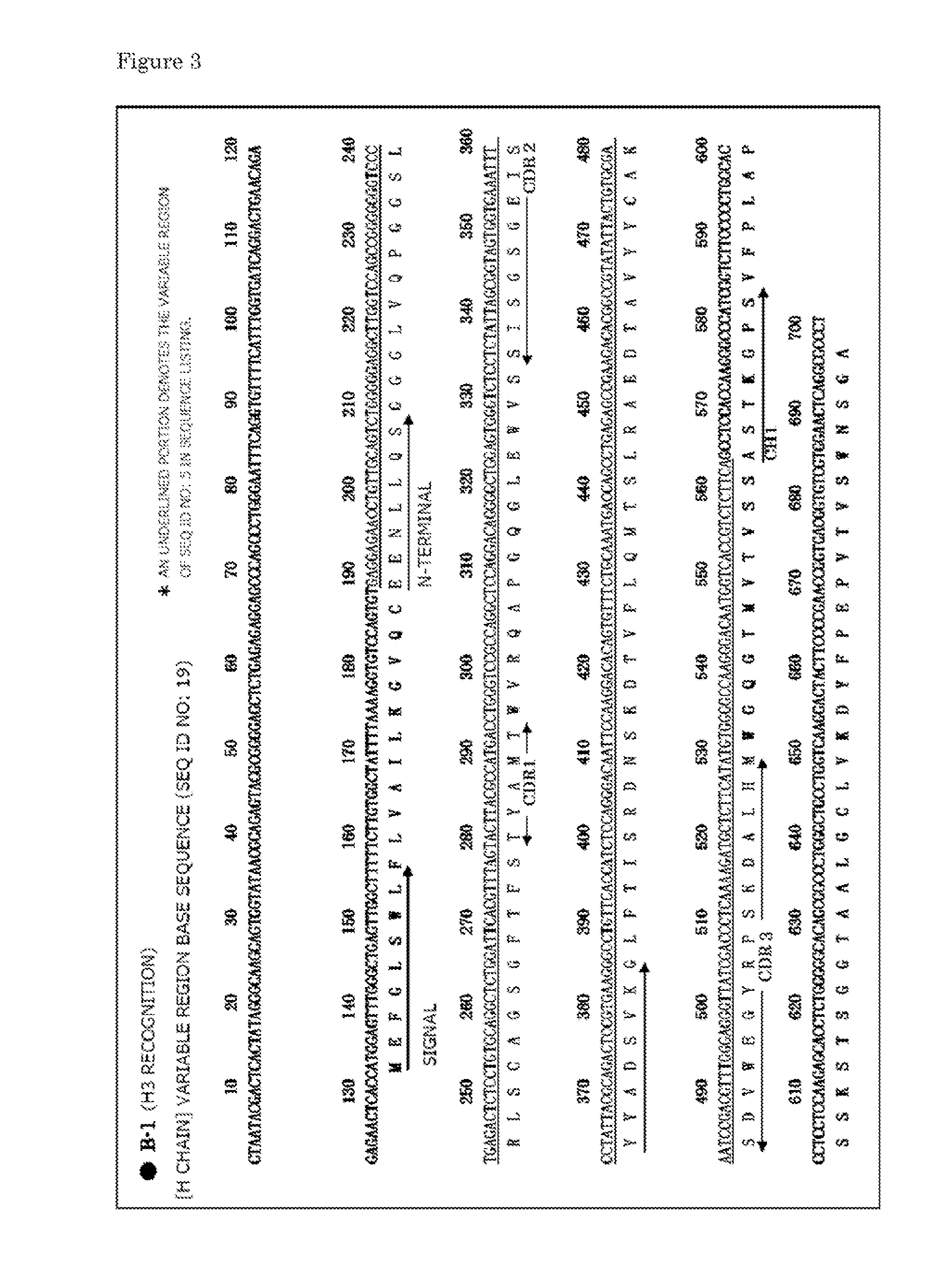Human Anti-Human Influenza Virus Antibody
a technology of human influenza virus and anti-human antibody, which is applied in the field of human anti-human influenza virus antibody, can solve the problems of not being able to report antibodies, losing recognition abilities, and often not being able to exert expected effects of vaccination corresponding to the conventional subtype, etc., and achieves the effect of survival rate and weight loss
- Summary
- Abstract
- Description
- Claims
- Application Information
AI Technical Summary
Benefits of technology
Problems solved by technology
Method used
Image
Examples
example 1
Preparation of Human Anti-Human Influenza Virus Antibody
[0067]In this example, a description is made of the preparation of a monoclonal antibody using a hybridoma.
[0068]1) Preparation of Viruses
[0069]Human influenza virus vaccine strains, i.e., A / New Caledonia / 20 / 99 strain as A virus subtype H1N1, A / Hiroshima / 52 / 05 strain as A virus subtype H3N2, and B / Malaysia / 2506 / 04 strain as the human influenza B virus, given from National Institute of Infectious Diseases were each used to infect MDCK (canine kidney epithelial cell line) cells, which were then cultured at 37° C. in the presence of trypsin for 2 to 3 days, and then the virus was collected.
[0070]2) Purification of Influenza Virus HA Antigen
[0071]An influenza virus HA antigen was purified by a method well-known to those skilled in the art. The above-mentioned influenza virus vaccine strains were each inoculated to an incubated chicken egg, which was then cultured at 33 to 35° C. for 2 days and subsequently left stand overnight at 4...
experimental example 1-1
Characterization of Culture Supernatant of Each Hybridoma
1) Neutralization Activity
[0081]A neutralization activity of each hybridoma culture supernatant against each influenza virus was measured in accordance with Arch. Virol., 86, 129-135 (1985), Microbiol. Immunol., 29, 327-335 (1985).
[0082]MDCK cells were dispensed at 2×104 cells / well in a 96-well microplate (for measuring a neutralization activity), and cultured overnight at 37° C. An 8-fold diluted solution of each antibody culture supernatant from which non-specific inhibitors had been removed by RDE treatment and a viral solution obtained from the following influenza virus vaccine strain, each of which had been prepared so that a focus forming unit / well was 100, were mixed in equal amounts, and incubated at 37° C. for 1 hour. Subsequently, 30 μL of this mixture were dispensed in each well of the microplate, to which the cultured MDCK cells had been added, and incubated at 37° C. for 30 minutes. Subsequently, the solution in e...
experimental example 1-2
Confirmation of Binding of Hybridoma Culture Supernatant to HA of Each Virus by Western Blotting
[0089]Western blotting assay of the culture supernatant of the hybridoma producing an A-1, A-2, B-1, B-2, B-3, C-1, D-1, D-2, E-1 or E-2 monoclonal antibody was performed for binding to HA of each virus. Plasma obtained from a patient with informed consent was used as a control. The purified HA antigen obtained in the section 2) of Example 1 was fractionated on SDS-PAGE, transferred onto a polyvinylidene fluoride (PVDF) membrane, and then blocked with a TBS-T solution of 5% defatted milk. The membrane was incubated with undiluted hybridoma culture supernatant or the plasma diluted to 2,000 folds with PBS-T at room temperature for 1 hour to perform an antigen antibody reaction. The blotted membrane was washed several times with PBS-T, and subsequently incubated in a solution containing a peroxidase-conjugated anti-human IgG antibody at room temperature for 1 hour. Development was performed...
PUM
| Property | Measurement | Unit |
|---|---|---|
| Inhibition | aaaaa | aaaaa |
| Inhibition | aaaaa | aaaaa |
| Inhibition | aaaaa | aaaaa |
Abstract
Description
Claims
Application Information
 Login to View More
Login to View More - R&D
- Intellectual Property
- Life Sciences
- Materials
- Tech Scout
- Unparalleled Data Quality
- Higher Quality Content
- 60% Fewer Hallucinations
Browse by: Latest US Patents, China's latest patents, Technical Efficacy Thesaurus, Application Domain, Technology Topic, Popular Technical Reports.
© 2025 PatSnap. All rights reserved.Legal|Privacy policy|Modern Slavery Act Transparency Statement|Sitemap|About US| Contact US: help@patsnap.com



